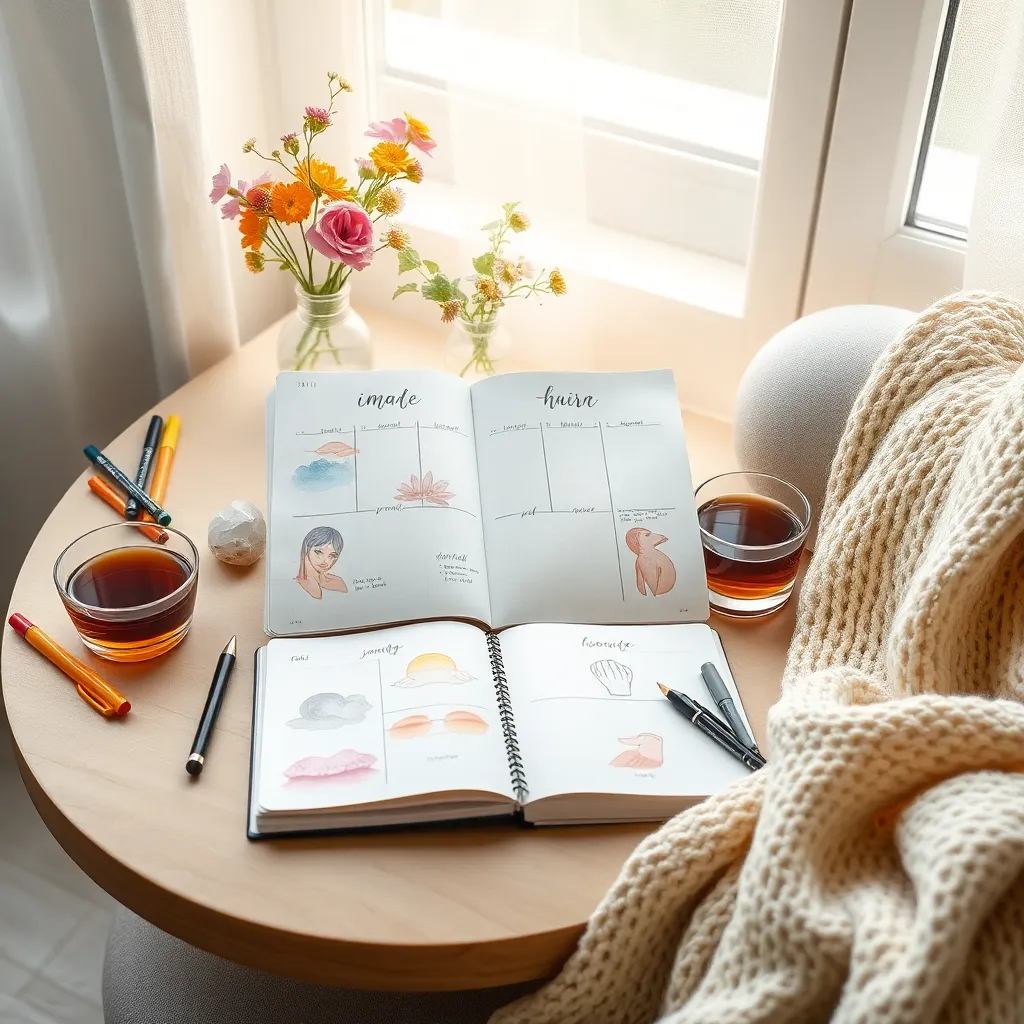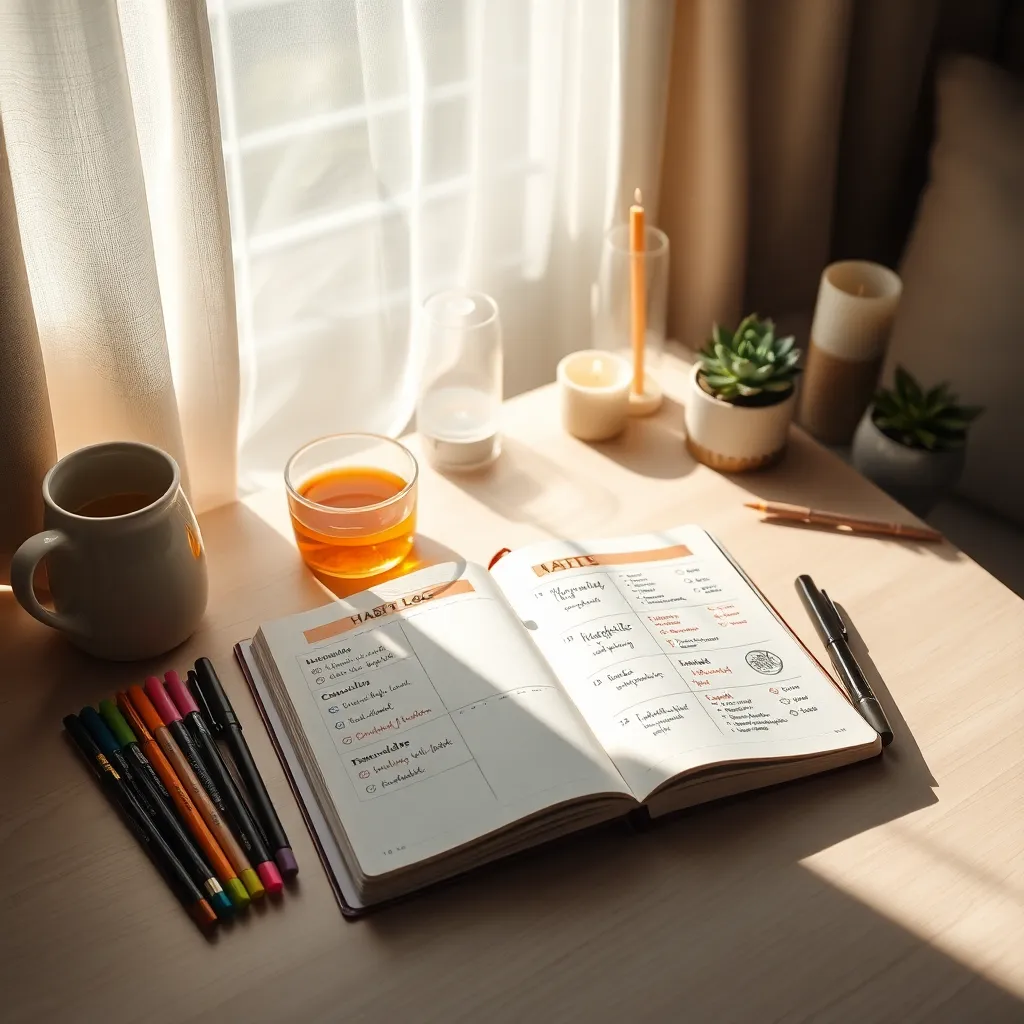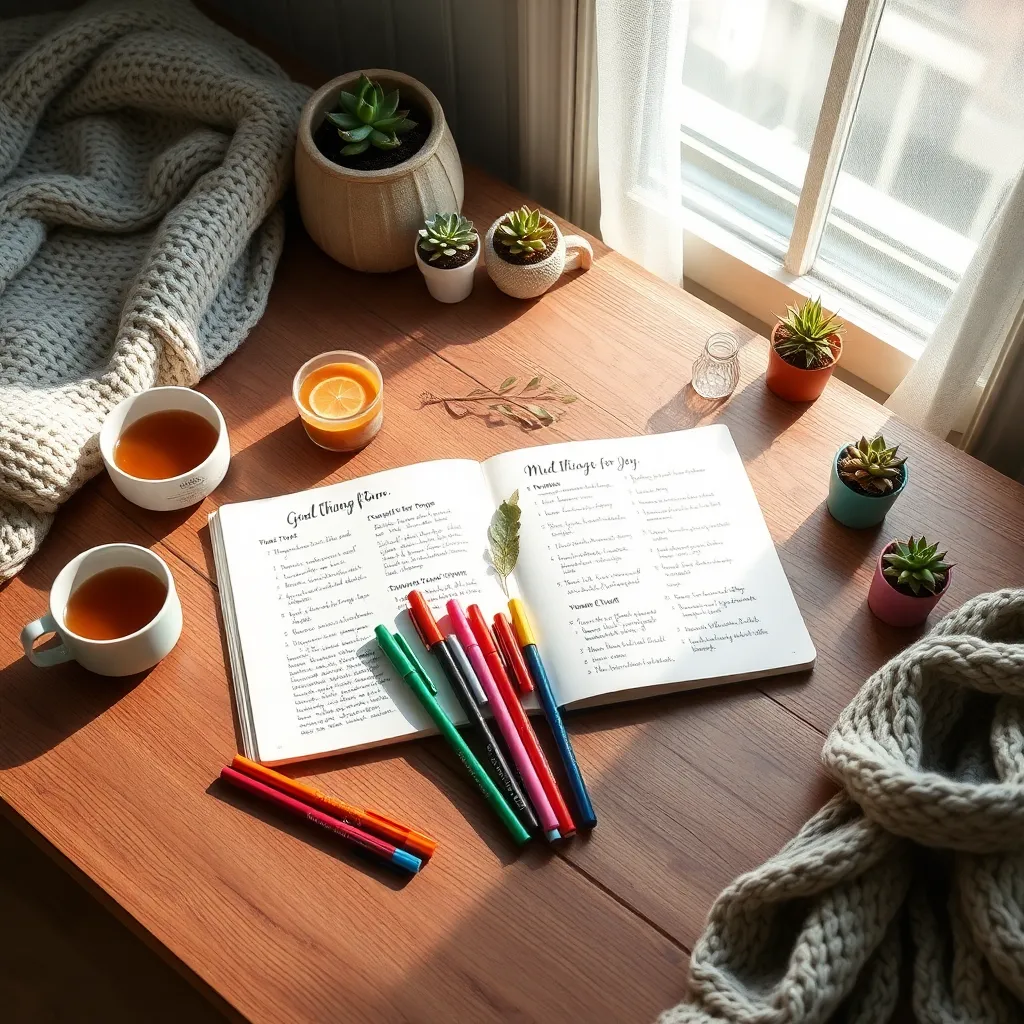In the hustle of daily life, nurturing mental well-being often takes a backseat. Yet, a bullet journal tailored for mental health can be a powerful tool, offering clarity and calm in moments of chaos.
Dive into layouts that spark reflection and growth. With each page, you’ll find a sanctuary of self-care, designed to uplift and support your mental journey.
Designing Calming Mood Trackers

Design calming mood trackers by incorporating simple color codes to represent emotions. Choose 3-5 colors to track feelings like happiness, anxiety, or calmness, and fill in a daily chart to visualize your mood patterns.
Use reflective prompts to deepen understanding:
- “What lifted my mood today?”
- “How did I cope with stress?”
These insights help tailor your self-care activities to better support mental well-being.
Crafting Self-Care Habit Logs

Integrating self-care habit logs into your bullet journal can be transformative. Begin by identifying key habits you wish to nurture. Track progress by creating a simple checkbox list or a habit tracker grid, ensuring consistency and accountability.
For a focused start, use prompts like:
- What habit will enhance my well-being today?
- How did nurturing this habit make me feel?
Reflect regularly to deepen your self-understanding and adapt your habits as needed.
Visualizing Emotional Progress Charts

Visualizing emotions can guide your self-awareness. Create an Emotional Progress Chart by mapping daily feelings. Use colors to represent different emotions, and track how they change over time.
Consider prompts like:
- What color describes my mood today?
- What triggered this emotion?
These insights help identify patterns, encouraging mindful reflection and growth.
Setting Up Gratitude Pages

Start your gratitude pages by dedicating a small section each day to list 1-3 things you’re thankful for. This practice builds a positive mindset and enhances well-being.
Consider prompts like:
- “What made me smile today?”
- “Who am I grateful for?”
These focus your thoughts on the good moments, fostering a habit of appreciation.
Building Stress-Relief Activity Lists

Create a stress-relief activity list in your bullet journal by identifying what truly calms you. Start with simple prompts like:
- What activities make me feel at peace?
- How can I incorporate these into my daily routine?
Regularly update your list to keep it relevant and effective. Reflect monthly by asking:
- Which activities reduced my stress this month?
- What new activities could I try?
Conclusion: Creating Beautiful Outdoor Spaces
In exploring the transformative power of bullet journaling for mental health, we delved into five pivotal relationship concepts: self-awareness, effective communication, empathy, conflict resolution, and emotional support. By integrating these themes into your bullet journal, you can foster a deeper understanding and connection with your loved ones. Start by dedicating a page to each concept, recording insights, and setting intentions for improvement.
As an actionable next step, create a weekly reflection spread in your journal. Use it to track your relationship interactions, noting both successes and areas for growth. This practice will not only enhance your awareness but also empower you to continually nurture your connections.
Remember to save or bookmark this article as a valuable resource for your relationship journey. Each visit will reinforce your commitment to building stronger bonds and provide fresh inspiration as you progress.
Looking ahead, embracing these principles can lead to more fulfilling and resilient relationships. With dedication and mindfulness, you have the tools to create a future filled with deeper, more meaningful connections. Take the first step today, and watch your relationships flourish.

